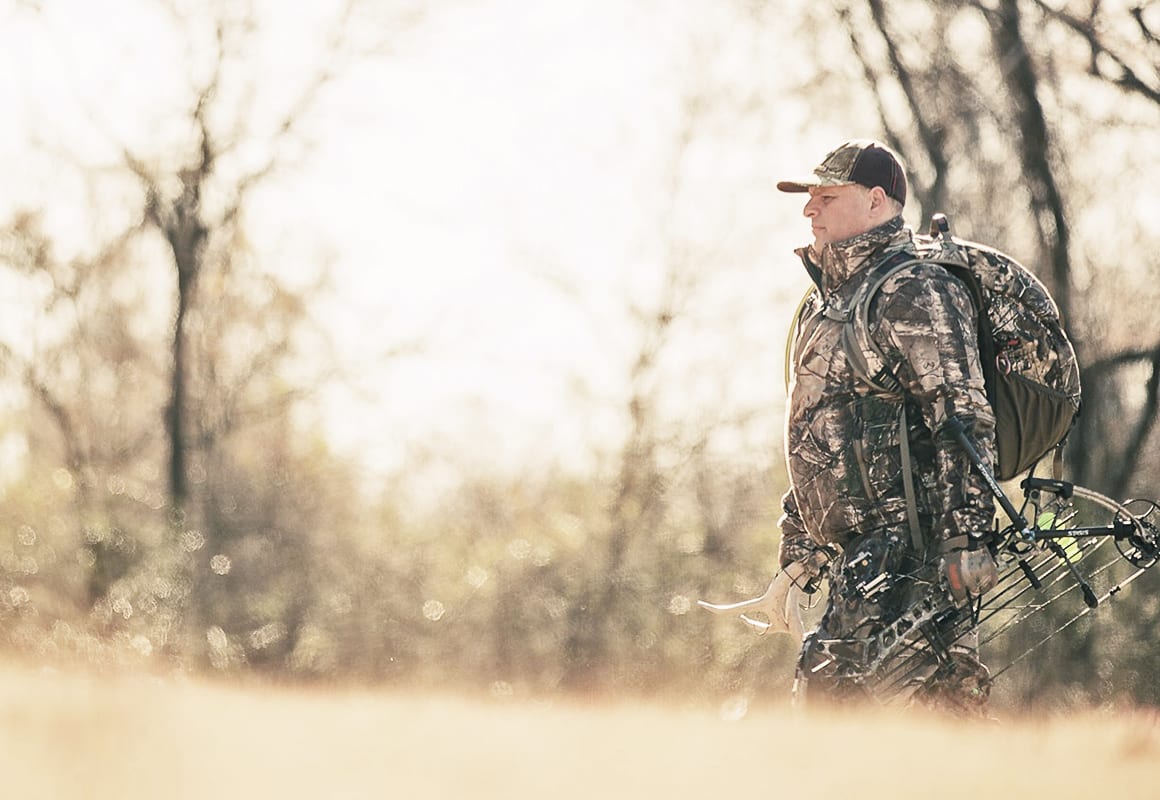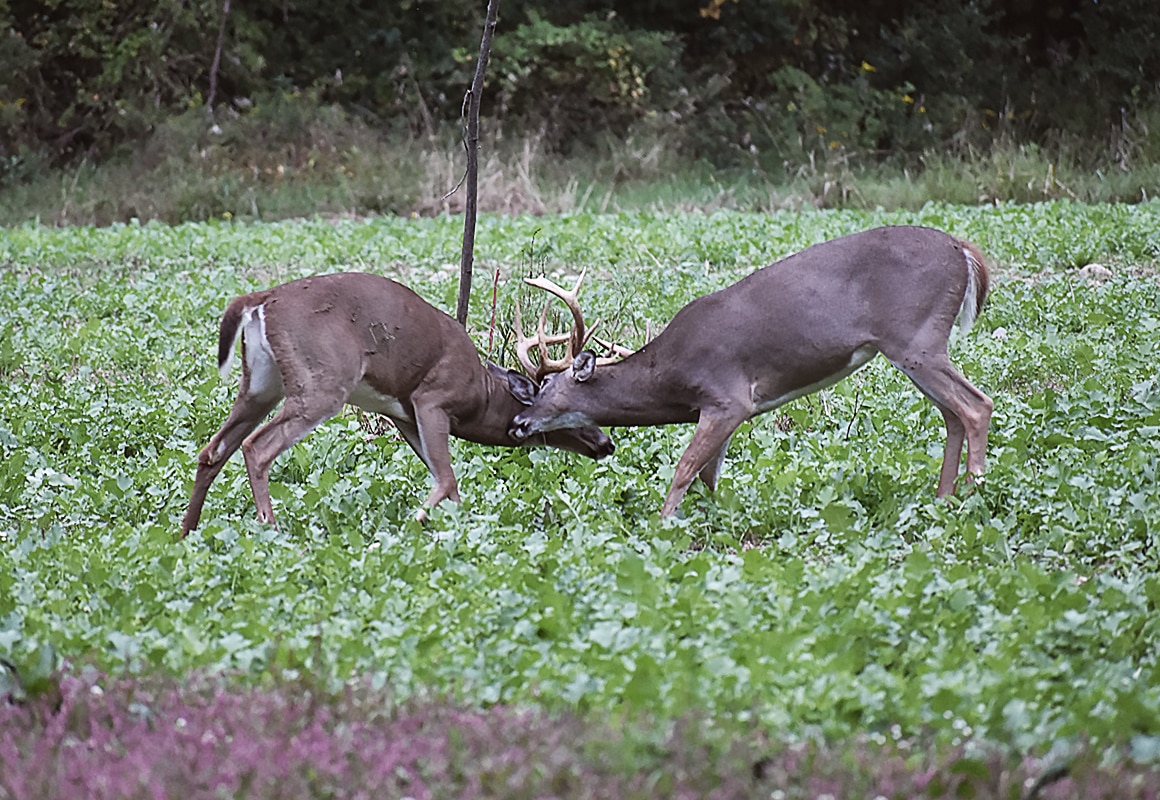Tim Endsley of Living The Brand lives to hunt public land whitetails. Whether he’s looking for a legal buck or a real bruiser, Endsley sticks to the tactics he’s learned through years of trial and error. Below, he shares seven tips for other public land hunters looking to fill their tags.

1. Avoid Large Tracts of Timber
Large tracts of forest will have trails running all throughout them and trying to pattern deer will take far too much time. Instead, Endsley goes for the smaller plots of woods near farmland.
When scouting these smaller pieces, keep an eye out for a deer’s access to food, water, and cover. Endsley said most of these smaller plots will have some sort of natural, or man-made travel corridor leading to a farm field.
2. Always Look Near the River
If you have access to a boat or can even just find some good habitat near a river, it’s a must to hunt waterways. A river on one side of you will act as a natural funnel limiting deer movement and helping you pick your tree stand placement.
According to Endsley, deer living near a river always seem to grow larger as well.
Look For Limited Rifle Opportunities
Back in his home state of Arkansas, rifle hunting opportunities are extremely limited and are mostly limited to private property. Endsley loves this because it keeps deer off of private farms and under his tree stand instead.
If you have the opportunity to go out of state, Endsley suggests looking at states with limited rifle opportunities on public land. Even if you are in a rifle-friendly state, though, he suggests looking at areas close to rivers, or just outside of residential areas.
Standing Corn? Go Home
When the corn is still standing, bucks will go in and there is nothing that can get them out. A mature deer will have everything he needs inside a cornfield like food, water, shelter, and even some doe companions, so there is no reason for him to leave. On one hunt in Nebraska, Endsley learned his lesson on corn by only seeing six total deer during the whole hunt and not a single buck. After they harvested the field two months later, he saw plenty of deer roaming around and even missed a dandy 150-incher.
If you’re looking to hunt near standing crops, he advises looking for shorter crops like beans. Mature deer won’t feel nearly as safe bedded in them, allowing you to get a shot as they travel back into thick woods for cover.
Observe, Before You Call
Endsley loves calling in bucks, but you have to make sure it’s the right time before you start. Rattling, grunting and bleats can all be deadly, but if deer aren’t in the mood, then what’s the point? Before breaking out the antlers, or grunt tube, Endsley suggests just watching the deer. Whether they are in your woods or in the next field over, you can plan properly by observing them and how they are acting.

“If I see some big deer on their feet and moving, damn right I’m gonna make some noise.”
If he’s not seeing deer active and moving, then he questions the odds of whether they will respond to a call in the first place. As you sit perched in your stand, you have the best view of what mood the deer are in and if you’re going to convince deer that you are a deer, you can’t be acting differently.
6. High Pressure Is a Must
When the barometric pressure is rising, deer are generally moving. You can’t control the weather, but Endsley never sees much action during low-pressure systems. That may be because deer seem to sense storms associated with falling pressure and will stay in bed until the poor weather passes.
Right after that storm passes, though, watch your barometer. As soon as the pressure rises, so will the deer out of their beds. This can especially be helpful for a multi-day storm. If deer wait the storm out in bed for over a day, that high-pressure system will get everyone out of bed and heading to the fields to feed.
7. Don’t Keep Secrets, Just Go Farther
Endsley doesn’t always bother keeping his hunting spots under wraps, he just goes places no one else wants to. Sometimes that means wading through snake-infested swamps or parking the boat right on top of a gator nest. While he may risk loss of limb occasionally, he doesn’t worry about anyone finding his secret spot when he shows them pictures of his latest trophy.